Achieving your running goals can be easier than you think, but they require more from your body than just running.
They say that practice makes perfect. Studying for an exam can ensure you achieve the best score possible and hopefully pass. Shooting free-throws for hours on end can improve your chances of hitting the game-tying bucket when your team needs you. Running is no exception to this rule.
I hear many people say that they’re not good runners. But what they need to realize is that anyone can be a strong runner if they put in the effort. What’s different with improving your running game is that it takes more than mileage to reach your optimal capability.

After over a decade of running, thousands of miles, and countless events, I have put together a list of elements that can transform you from good to great, improving your overall distance and running speed.
Building a Cardiovascular Base
Whether you are brand new to running, have been competing for years, or you are simply ready to take it to the next level, building and maintaining a cardiovascular base is critical.
For those just starting out, I recommend starting with 3-4 runs per week at a very slow and comfortable pace at a distance that is manageable. If you aren’t sure what “comfortable” refers to, imagine that you are able to hold a conversation during your run without passing out. Maybe start with a half mile or a mile, working solely on improving your cardiovascular efficiency and your body’s ability to take in oxygen.
As you run, the working muscles in your body require oxygen-rich blood from your heart to keep moving. The more oxygen being used, the faster your heart needs to pump. Working these muscles multiple times per week will train your heart to pump more efficiently.
Heart Rate Monitoring
During any training session, I highly recommend the use of a heart rate monitor. Many watches such as the iWatch and many Garmin watches can show you your heart rate during and after your run, however, chest strap monitors are slightly more accurate.
Acceptable heart rate ranges vary depending on age and other factors, so it is best to speak with your doctor on appropriate ranges for yourself. You can also find many online calculators to get an estimate.
Once you have determined a range that best suits your needs, you can slowly increase your mileage (as you feel comfortable) within this range. It is important to note that many other factors can play a role in your heart rate, including the environment that you’re in, your hydration levels, or even your most recent meal. The better you understand these factors, the more success you can have during training runs.

Heart Rate Training
Improving and managing your heart rate is crucial to your long-term success as a runner, and there are several ways to do so.
Tempo runs are runs that hold the same running pace over the length of the run, such as running on a treadmill with a specific setting. As you track your heart rate during these runs, you will be able to identify how quickly your heart rate rises and about where in begins to plateau. If your heart rate rose too quickly or plateaued higher than expected, the next tempo run could be at a slower pace. Conversely, if your heart rate was well within your acceptable range, you could quicken your pace for the next run.
Another training technique is known as an Interval run.
Interval Training for Heart Rate Training
These speed workouts are runs that break up the planned distance into smaller intervals utilizing a faster pace (usually 5-10% faster than your tempo runs) with breaks in between. A common interval run would include a 1 km run followed by a 1-minute break, repeated anywhere from 5-10 times depending on your goals.
During these runs, your heart rate will climb with each of the 1km intervals and then drop back down during your break. You may find that each subsequent interval brings your heart rate a little bit higher than the interval prior. Interval training runs are a great way to build endurance and should be worked into the normal routine for runners at least a couple of times per month.
Nutrition for Heart Rate Training
The level of hydration in the body, as well as the body’s overall nutrition play a critical role in the body’s performance, including its heart rate. If you run first thing in the morning before you’ve eaten, you should expect a lower heart rate than if you had just eaten a greasy or fatty meal.

Ensuring your body has plenty of fluids before and during a run can also prevent your heart rate from skyrocketing when you least expect it. As good as water is for you, you need to make sure your body has the right levels of salts and electrolytes as well. As the salts within your body get depleted during sweating, they must be replenished constantly to ensure your heart rate remains low. Gatorade and other sports drinks may work quite well, however, if you are looking for less sugary drinks, I recommend packets that can be added to your water such as Liquid IV or Water Boy.
Depending on how sweaty of a person you are, the salt levels required may vary. For not-so-sweaty runners, 500mg of salt for every hour of running would suffice, however, up to 1500mg may be recommended for the overly sweaty (like me).
Any run less than an hour may not require any salt intake during your run, however, ensure you have well-hydrated yourself prior.
Strength Training
In 2023, I was fully devoted to mileage, consistently running at least 100 miles per month even without many races planned. I felt confident for the most part, as I was happy with the miles I was tracking, but I learned the hard way that simply running all week and month was not the path to running faster or running longer.
In that year alone, I pulled my right groin muscle, tore a tendon behind my knee, and nearly lost all range of motion in my ankles. After months of therapy and recovery, I found solace in the fact that running does not work every muscle in your body. It works many of them, but certainly not all of them, including the muscles that are susceptible to injury.
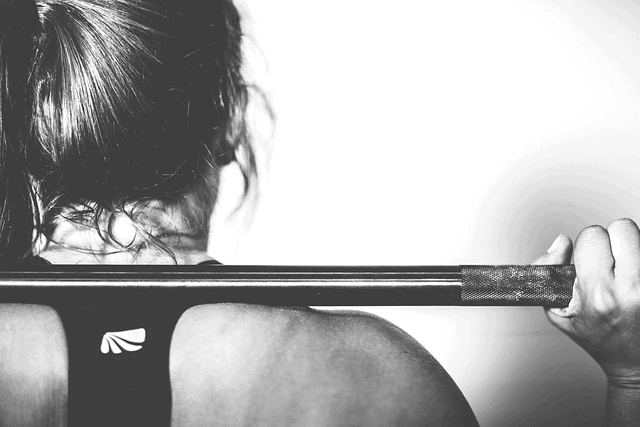
I had also noticed that, even though I had lost a fair amount of weight, I was losing muscle mass. Up until that year I had primarily focused on muscle mass, but it was fading quickly. I had assumed that my running goals would be put on hold if I focused too much on strength training. Boy, was I wrong. Adding strength training back into my weekly routine was a paramount part of my success.
Running uses a lot of leg muscles, from your glutes and quads to your calves and hamstrings, but also your core.
Core Strength Training
Maintaining a strong core can improve your stability, your balance, and your overall running experience.
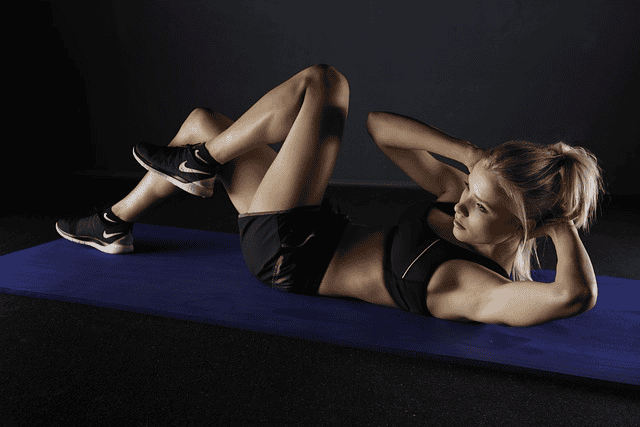
Adding a few simple abb workouts into your weekly routine can be difficult at first but can pay dividends in your overall success. Even if you don’t frequent a local gym, there are several at-home workouts that can be done including an abundance of sit-up routines, flutter kicks, scissors, or planks.
Spend at least 10-15 minutes a few times of week working on your core muscles.
Lower Body Strength Training
To improve your running speed and overall running performance, you need to work the muscles in your lower body that are prone to injury or prone to fatigue.
Weight training at the gym, such as squats or leg press exercises can have you reaching faster speeds in as little as a few months by working the muscles around your joints. You may often hear the phrase “don’t skip leg day” because most people do exactly that.
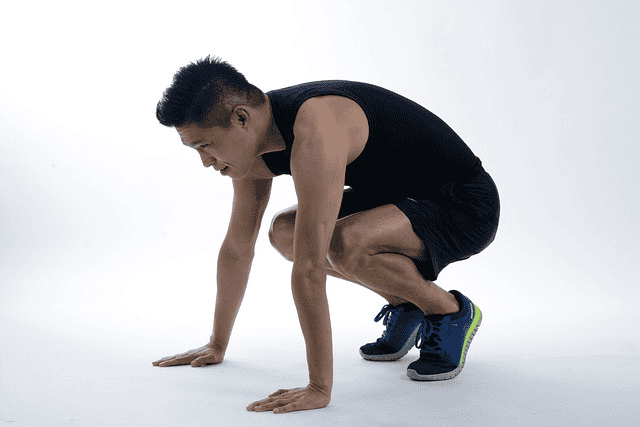
They don’t want to struggle walking up the stairs or tying their shoes the next day, but sticking to a training schedule that includes working the lower body can reduce the risk of long-term injuries and help build endurance during those longer runs.
Adding a series of lunges, squats, or wall squats into your weekly training program can not only allow you to run faster and longer but can also improve your running form and make interval training that much easier.
Upper Body Strength Training
Although the upper body muscles do not play as much of a role in running performance as core and lower body strength training, it is just as important in maintaining overall muscle mass. Having a strong training program that incorporates all areas of the body each week is ideal in achieving peak fitness.
Personally, I tend to stick with more of a calisthenics approach in my training plan primarily utilizing push-ups and pull-ups at least once a week. Sticking to bodyweight exercises instead of heavy weights makes it easier to maintain a leaner physique.
Runners may want to focus on maintaining a lower overall body weight to improve performance, and light calisthenics once a week can help burn unwanted fat and promote lean muscle mass.
Flexibility and Range of Motion
One area I have always struggled with is flexibility. For the majority of my life, I have not even been able to touch my toes when bending over. Getting into running has shown me just how important flexibility is for faster running, running form, and managing an optimal stride length.
Stretching
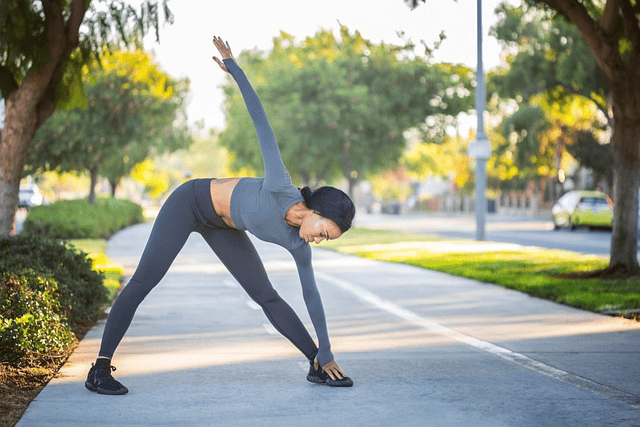
Having a running routine that incorporates light stretching before and after a run can mitigate the risk of short- and long-term injury, as well as have you feeling your best during speed training or preparing for a marathon or half marathon. Nothing prevents you from running faster more than tight muscles that don’t seem to want to cooperate.
At a minimum, before and after your run, you should spend 5-10 minutes stretching your quads, calves, and hamstrings. There are countless resources for stretching techniques you can follow.
Range of Motion
In addition to proper and adequate stretching of your muscles, working on range of motion is just as important. I was very hard on my ankles when I was a teenager and have been feeling the repercussions ever since.
Proper joint care is essential for long-term running. Whether you are running trails or roads, adding just a few extra minutes to your stretching routine to focus on joint health can go a long way. In the running sense, we are primarily referring to knees and ankles.
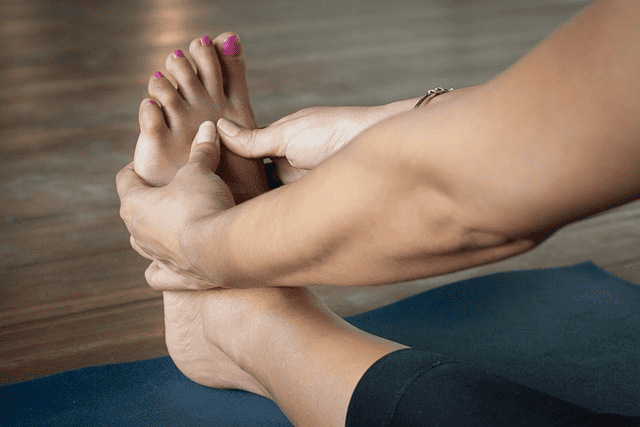
The ankles can rotate in 3 directions: dorsiflexion and plantarflexion (movement toward the sky and floor), inversion and eversion (rotating the foot inward and outward), and medial/lateral rotation (rotating the foot side to side). Movement in each of these three directions can help loosen the joints and provide greater flexibility and protection during exercise.
Because the ankles have much more potential movement than the knees, there are more exercises that can be done to help prevent injury. Practice spending at least 10 seconds with each movement type on each ankle prior to running. End the joint session with 20 seconds of full rotations, both clockwise and counterclockwise, for both ankles.
Choosing Running Gear
Now that we’ve started to develop a program of cardiovascular performance, strength training, and stretching, we need to look at the attire best suited to your needs.
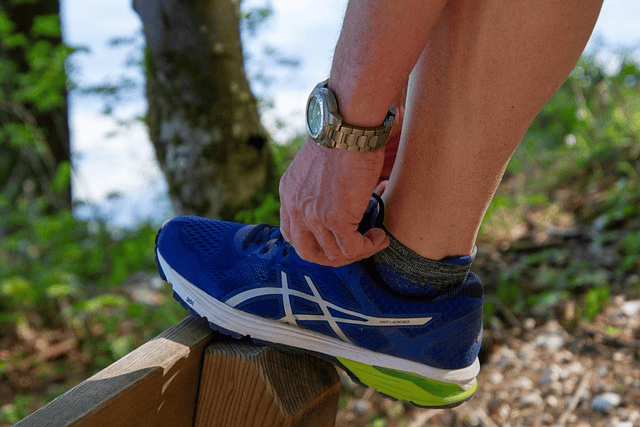
Running Shoes
If there is one area in running where you don’t want to go cheap, this is it. Proper footwear can make or break a good run, and finding what’s best for you might take a few tries.
Most people would tend to think that the best running shoes on the market are the best shoes for them. Shoes right off the shelf like Nike, Asics, Brooks, Hoka, and so many more all can be great options, but if you have any abnormality in your feet or running style, you may find yourself in a world of trouble.
Flat-footed runners may have a harder time breaking in new shoes than someone with prominent arches and may need to consider softer insoles or custom insoles.
Many shoe companies now offer wider shoe sizes which can provide that extra layer of comfort than the standard narrow shoe type. I have a second toe that is longer than my big toe which requires me to go one size larger than I normally would – without the larger size, I would be more likely to lose a toenail (which I have done several times) due to the constant pressure in that area.
If you are struggling to find the perfect running shoe for you, I would recommend finding a running store that specializes in custom shoes. These companies can measure many aspects of your foot and analyze your gait cycle before recommending anything.
Once that perfect shoe has been found and has proven to be one of your biggest assets, rotate them out every 200-300 miles as even the best shoes wear down, losing their cushioning and potential for protection.
Attire
The rest of your attire should solely be about comfort. For the warmer runs, make sure you’re dressed as light as possible with water-wicking materials to keep you dry, as well as sunglasses or breathable running hats.
For the colder runs, many would think adding on the layers is the best bet, only to realize that they’re overheating after 10 minutes. In the event you do need to bring extra layers, I suggest having some type of bag or strap to store clothing you no longer prefer to wear. Just make sure you have tested your bag or strap for comfort before taking it on a long run.
Make sure your socks are comfortable and allow your feet to breath as they sweat. Nothing is more frustrating than wet or damp socks during a run.
Running Technique
Although many of the best runners have similar techniques, each individual is unique, and each running style may be perfectly fine for them.
6 Tips for Your Running Style
As long as you are not getting injured frequently, your running style may not need to be changed at all, but here are a few of the better techniques I have learned.
Keep your head level rather than bobbing up and down
Don’t over rotate your arms. Keep them in a “sawing” motion
Keep your shoulders down rather than tensing upward
Lean slightly forward. This allows gravity to assist you forward
Don’t over stride. Keep your stride length comfortable (your knees will thank you)
Push back with your plant foot to propel you forward
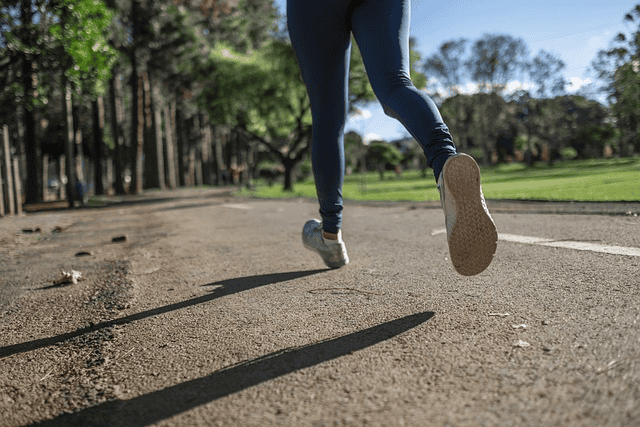
Elements of Running Faster
Your running speed comes down to two things: stride length and cadence.
Your cadence is how frequently you take a step, and your stride length is the distance between each of those steps. Combining the two is how you get your speed. Interval training is a great way to practice one or both of these elements to run faster and longer.
The stronger your leg and core muscles are, the more power you will be able to put into each of your strides. The more flexible you are, the further you will be able to run without fear of injury. See how this all ties together?
Elements of Running Further
Adding distance to your run is a combination of endurance training, muscle building, proper fueling, and training of the mind. Since we have already covered the first two, let’s take a look at how we can fuel our bodies properly before, during, and after a run, and convince our mind that we can keep going when it’s constantly telling us to stop.
How do we fuel for a run? Well, it depends mostly on the type of run. For runs that are planned for less than 30-45 minutes like speed training or interval training, you may not need to fuel during, as your body likely has enough stores to help you power through. However, you should have a healthy amount of carbohydrates and protein in your system at least 1-2 hours before.

For longer distance runs, you should treat it more as a science. The average person burns between 100-140 calories for every mile run. If you are running a half marathon, you should expect to lose between 1300-1800 calories and get burnt out about two-thirds the way through. Gel packs are a great way to fuel during runs as they each have about 100 calories. Although the calories are primarily sugar-based carbohydrates, they can give you the energy you need to perform.
One thing I learned during my long-distance training is that the fueling during a run should be consistent and planned at certain intervals, rather than holding off a bit longer because you’re “feeling good”. I learned that every 2-3 miles was a healthy and proactive method for me to stay strong deep into the miles.
So, we’re properly fueled before and during our run, but something inside of us is saying we need to stop. Your brain is designed to keep you comfortable, to prevent you from getting hurt. When you get a few miles into your run, your mind is trying to tell you to stop because it thinks that’s the best option to keep you safe. In most cases, we respect that. But when we’ve been planning and preparing for the miles, the last thing we need is our brain holding us back. So how do we trick our brain into allow us to keep going?
The secret is to consistently do what is uncomfortable – what you don’t want to do. Is it too hot outside or too windy to go for a run? Go anyway. Are you too tired to get your abb workout in because yesterday was leg day? Do some sit-ups anyway. The more you push your level of comfort, the more your brain starts to realize that you can do this.

Stay uncomfortable and build some mental toughness, and you won’t have to worry about your brain slowing you down.
Develop a Structure
You should now be at a point where you fully understand many of the elements that can allow you to run faster and longer, so let’s build a training schedule to help you tie everything together. Below is an example of a standard weekly running routine and strength routine that can be followed when there is a desire to improve your running performance.
Day 1: Stretch & Tempo Run (steady pace, moderate distance)
Day 2: Abb & Upper Body Workout
Day 3: Stretch & Interval Training (10% faster pace, short distance)
Day 4: Abb & Leg Workout
Day 5: Stretch & Easy run (Negative splits, moderate distance)
Day 6: Stretch & Long run (steady pace or negative splits)
Day 7: Rest Day
This plan can obviously be tailored or adjusted to meet your needs. Tempo runs should be adjusted based on your heart rate, and interval speed workouts can be increased over time.
Putting it all Together
Regardless of your goals, there are many ways to improve as a runner that don’t include actual running. Obviously, you will still need to log the miles, but by following a structured plan to improve your overall health, you can start to see larger step changes than ever before.
So, go get gear and a heart rate monitor that works for you, incorporate strength training and flexibility exercises into your routine, fuel your body, develop a weekly structure, and go hit your personal best.